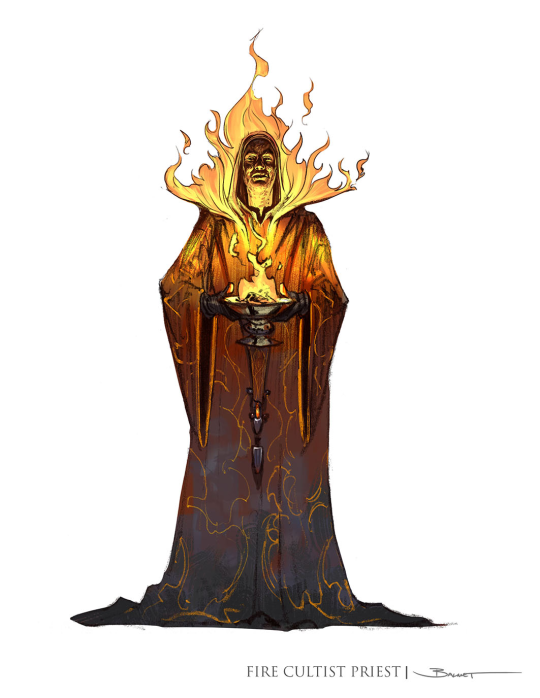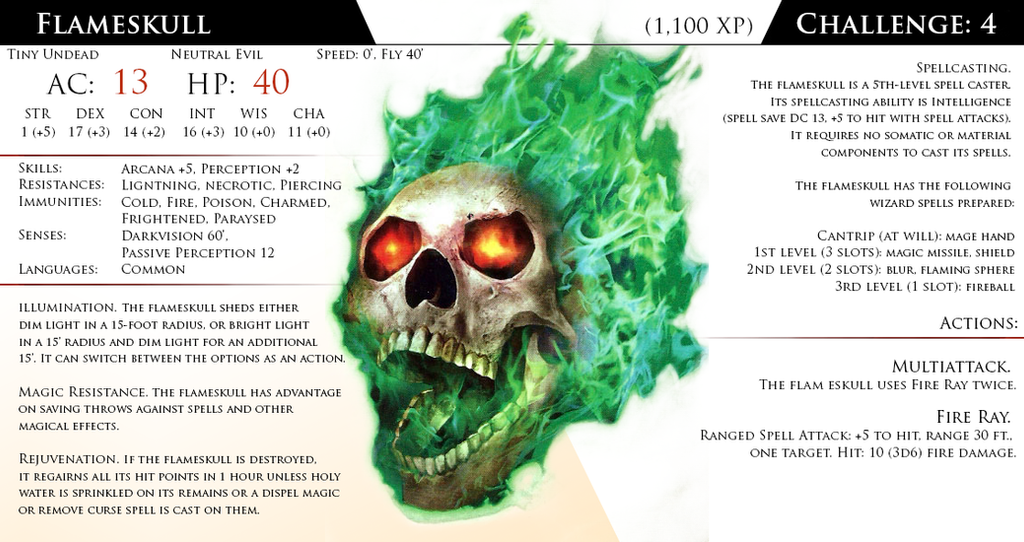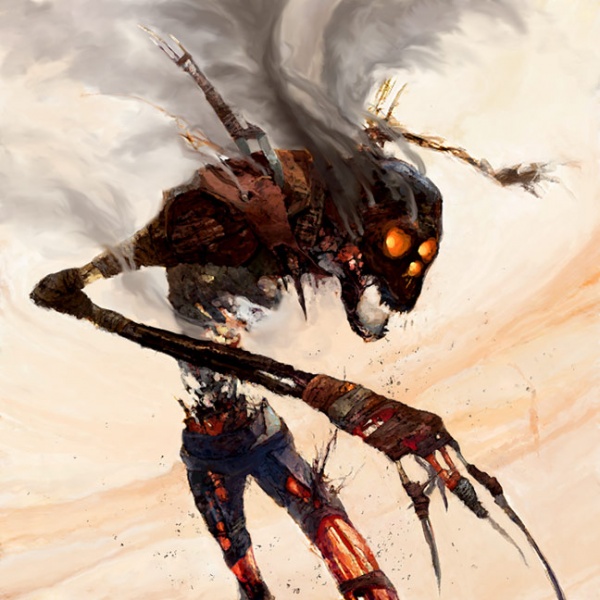Quickleaf
Legend
There are a lot of questions new DMs (heck, and experienced DMs like me as well) have about how to approach writing an adventure, designing a dungeon, creating/converting a monster or NPC, and how to make this awesome imagined villain actually be awesome in the game. I want to offer my ideas on all of it, but with a focus on how it all works together in actual practice.
This thread merges a couple others, including First time making a serious dungeon and Creating The Bonfire Help with a BBEG. However, the scope goes far beyond these.
Lastly, I'll add that I love hearing ideas and discussing my designs on ENWorld, so I am happy for whatever engagement this creates. This won't be structured like a normal article series or anything, more just me digging into the guts of my design process and sharing things as I create them.
Table of Contents
Step 1: Honing the Idea & Brainstorming
Step 2: Room Lists, 'Massing', and 'Adjacencies
Step 3: Quests & Character Hooks
Step 4: Verisimilitude & Foundational Questions
Step 5: Making Monsters - Part 1: NPCs
Step 5: Making Monsters - Part 2: Monster Variants
Step 5: Making Monsters - Part 3: New & Converted Monsters
Step 5: Making Monsters - Part 4: Hard-to-Convert Monsters
Step 5: Making Monsters - Part 5: Legendary Monsters / Villains
Step 6: Dungeon Mapping - Part 1: Iterative Design & Rough Maps
Step 6: Dungeon Mapping - Part 2: Hand Drawn Maps
Interlude: YouTube Design Chat, Audio Only
Step 6: Dungeon Mapping - Part 3: Sketches
Step 6: Dungeon Mapping - Part 4: Mapping in Three Dimensions
@Imaculata is sharing a "sister" series called Fire and Water: Designing Themed Dungeons. Check it out!
Master List of Resources
Step 1: Honing the Idea & Brainstorming
Ideas are dime a dozen. What really makes an idea interesting is how it's developed. So the first step is actually doing something with the idea.
What prompted me to post is a dungeon/adventure I'm working on called Krak al-Mazhar: Citadel of the Shadow in the Flame; in brief, it's the secret lair of The Brotherhood of True Flame (think: evil arcane society) built into the ridge of a caldera. It's designed for roughly 15th-16th level PCs.
Let's pause and ask "how did I get that number?"
Well, there are 3 reasons. First, it's for an Al-Qadim game I run and I anticipate the PCs being around that level when they confront the big bad evil guy (BBEG). Second, the adventure will feature a fair number of CR 3 undead (e.g. mummy archivists, Lawful Neutral wight "crypt servants", and an upgraded ghast called a "lesser ghul"); which is relevant to the 14th-level cleric's Destroy Undead (CR 3) feature. Third, 15-16th level spellcasters have access to 8th level spells like antimagic field, dominate monster, glibness, and telepathy; this adventure is designed with those sorts of capabilities in mind.
So without even meaning to, I've stumbled onto a design principle: If you have a level in mind for a dungeon/adventure, write to the capacities of PCs of that level. You may even want to design a bit first, and then go back and figure out what level it's suited for once your mind is clear of the initial stages of design.
My first step was to brainstorm as much as I could about the dungeon/adventure, and to that end I used Mindmeister web-based mind-mapping.
http://i.*****.com/jivL3EA.png
A few things stood out to me after I sat back and looked at my vision...
Step 2: Room Lists, 'Massing', and 'Adjacencies'
My next step has been iterative, but is looking much better now than it was at the beginning. I've done this with notecards before, but in this case I opted to use Photoshop. I wrote down all the rooms I could think of. Then I gave them an approximate size in relation to each other – for example, I knew The Great Garden and the Tower of the Bonfire were going to be big areas with sub-areas within them. And lastly, I tried arranging them in a logical way (e.g. the Dungeons should lead to the Water Distillery, because that's where the Brotherhood drain the dead of their precious water -- remember they live in a hostile desert -- and prisoners had better be good for something).
This is still just a conceptual map, and still work-in-progress, but it starts to give a feel of the dungeon...
http://i.*****.com/fmm4LOy.png
Resources: Blogs about Dungeons
Deeper in the Game A 7-part article on dungeon design
Critical Hits The Architect DM series
Critical Hits Chatty DM's Re-examining the Dungeon
9 Dungeon Design Secrets YouTube video from Ben at Questing Beast
Grognardia Old School Dungeon Design Guidelines (taken with a grain of salt, and a good sense of humor)
Dungeon Fantastic Megadungeon Design
The Alexandrian: Jacquaying the Dungeon Superb analysis of Jennell Jacquay's dungeon design to derive usable principles
Sly Flourish: Making Awesome Dungeons follows Rodney Thompson's advice about making dungeons "familiar, functional, and fantastic"
One of my favorites from Dungeon Fantastic is "Vary the theme by area." This refers to a variety of entrances, monsters, verticality, themed areas, and challenge levels (and I'd extend it to challenge types).
This thread merges a couple others, including First time making a serious dungeon and Creating The Bonfire Help with a BBEG. However, the scope goes far beyond these.
Lastly, I'll add that I love hearing ideas and discussing my designs on ENWorld, so I am happy for whatever engagement this creates. This won't be structured like a normal article series or anything, more just me digging into the guts of my design process and sharing things as I create them.
Table of Contents
Step 1: Honing the Idea & Brainstorming
Step 2: Room Lists, 'Massing', and 'Adjacencies
Step 3: Quests & Character Hooks
Step 4: Verisimilitude & Foundational Questions
Step 5: Making Monsters - Part 1: NPCs
Step 5: Making Monsters - Part 2: Monster Variants
Step 5: Making Monsters - Part 3: New & Converted Monsters
Step 5: Making Monsters - Part 4: Hard-to-Convert Monsters
Step 5: Making Monsters - Part 5: Legendary Monsters / Villains
Step 6: Dungeon Mapping - Part 1: Iterative Design & Rough Maps
Step 6: Dungeon Mapping - Part 2: Hand Drawn Maps
Interlude: YouTube Design Chat, Audio Only
Step 6: Dungeon Mapping - Part 3: Sketches
Step 6: Dungeon Mapping - Part 4: Mapping in Three Dimensions
@Imaculata is sharing a "sister" series called Fire and Water: Designing Themed Dungeons. Check it out!
Master List of Resources
Blogs about Dungeons
Deeper in the Game A 7-part article on dungeon design
Critical Hits The Architect DM series
Critical Hits Chatty DM's Re-examining the Dungeon
Grognardia Old School Dungeon Design Guidelines (taken with a grain of salt, and a good sense of humor)
Dungeon Fantastic Megadungeon Design
The Alexandrian: Jacquaying the Dungeon Highly recommended 7-part series about mapping like famous Jennel Jacquays
Sly Flourish: Making Awesome Dungeons follows Rodney Thompson's advice about making dungeons "familiar, functional, and fantastic"
Fantasy Demographics
Autarch's Adventurer Conqueror King Alex has a blog post "The Demographics of Heroism" about assumptions of how rare individuals are leveled from 1st to 14th level.
The Magic Tree Tanz deconstructs how many hypothetical NPCs would have "the hero stuff" and survive long enough to do something with their class levels.
The Fifty Percent Rule MontyWild proposed a 50% rule for determining how many NPCs of a given level appear in a world. Not an unreasonable starting point.
D&D vs. USA Demographics Fallencoder does an interesting comparison of adventurers to US armed forces personnel, coming up with probabilities of encounter an NPC of #th level in the world, and in a number of combats. Possibly flawed assumptions, but interesting nevertheless.
Monster Design & Conversion
AngryGM has a good article covering 5th edition monster creation in detail, starting from the very basics
Official WotC Conversion Guide
Brent Newhall's 1e-3e-5e Converter
Pathfinder to 5e Converter by [MENTION=6670944]Kryx[/MENTION]/Mark Lenser
Equating AD&D 2e XP to 5th edition CR (my thread on ENWorld)
Villain & Legendary Monster Design
Villain Builder: 7 part series by Wolfgang Baur
Sly Flourish: Building Legendary Creatures
Secret Planescape Origin of Legendary Solo Monsters (my ENWorld thread)
Hand Drawn Mapping
Dyson's Dungeons Tutorials
Dyson's dungeon mapping symbol key
DMG Mapping Symbols
Cartographer's Guild: A Forum for Cartography Enthusiasts
Verticality in Dungeons
The Architect DM: Give It Some Height
Dyson's Dodecahedron: Vertical Morphology
strolen.com/viewing/Sanctum_of_Water Strolen's Citadel: Sanctum of Water I recently got an error message that strolen's site is not secure, so I've deactivated the link.
Deeper in the Game A 7-part article on dungeon design
Critical Hits The Architect DM series
Critical Hits Chatty DM's Re-examining the Dungeon
Grognardia Old School Dungeon Design Guidelines (taken with a grain of salt, and a good sense of humor)
Dungeon Fantastic Megadungeon Design
The Alexandrian: Jacquaying the Dungeon Highly recommended 7-part series about mapping like famous Jennel Jacquays
Sly Flourish: Making Awesome Dungeons follows Rodney Thompson's advice about making dungeons "familiar, functional, and fantastic"
Fantasy Demographics
Autarch's Adventurer Conqueror King Alex has a blog post "The Demographics of Heroism" about assumptions of how rare individuals are leveled from 1st to 14th level.
The Magic Tree Tanz deconstructs how many hypothetical NPCs would have "the hero stuff" and survive long enough to do something with their class levels.
The Fifty Percent Rule MontyWild proposed a 50% rule for determining how many NPCs of a given level appear in a world. Not an unreasonable starting point.
D&D vs. USA Demographics Fallencoder does an interesting comparison of adventurers to US armed forces personnel, coming up with probabilities of encounter an NPC of #th level in the world, and in a number of combats. Possibly flawed assumptions, but interesting nevertheless.
Monster Design & Conversion
AngryGM has a good article covering 5th edition monster creation in detail, starting from the very basics
Official WotC Conversion Guide
Brent Newhall's 1e-3e-5e Converter
Pathfinder to 5e Converter by [MENTION=6670944]Kryx[/MENTION]/Mark Lenser
Equating AD&D 2e XP to 5th edition CR (my thread on ENWorld)
Villain & Legendary Monster Design
Villain Builder: 7 part series by Wolfgang Baur
Sly Flourish: Building Legendary Creatures
Secret Planescape Origin of Legendary Solo Monsters (my ENWorld thread)
Hand Drawn Mapping
Dyson's Dungeons Tutorials
Dyson's dungeon mapping symbol key
DMG Mapping Symbols
Cartographer's Guild: A Forum for Cartography Enthusiasts
Verticality in Dungeons
The Architect DM: Give It Some Height
Dyson's Dodecahedron: Vertical Morphology
Step 1: Honing the Idea & Brainstorming
Ideas are dime a dozen. What really makes an idea interesting is how it's developed. So the first step is actually doing something with the idea.
What prompted me to post is a dungeon/adventure I'm working on called Krak al-Mazhar: Citadel of the Shadow in the Flame; in brief, it's the secret lair of The Brotherhood of True Flame (think: evil arcane society) built into the ridge of a caldera. It's designed for roughly 15th-16th level PCs.
Let's pause and ask "how did I get that number?"
Well, there are 3 reasons. First, it's for an Al-Qadim game I run and I anticipate the PCs being around that level when they confront the big bad evil guy (BBEG). Second, the adventure will feature a fair number of CR 3 undead (e.g. mummy archivists, Lawful Neutral wight "crypt servants", and an upgraded ghast called a "lesser ghul"); which is relevant to the 14th-level cleric's Destroy Undead (CR 3) feature. Third, 15-16th level spellcasters have access to 8th level spells like antimagic field, dominate monster, glibness, and telepathy; this adventure is designed with those sorts of capabilities in mind.
So without even meaning to, I've stumbled onto a design principle: If you have a level in mind for a dungeon/adventure, write to the capacities of PCs of that level. You may even want to design a bit first, and then go back and figure out what level it's suited for once your mind is clear of the initial stages of design.
My first step was to brainstorm as much as I could about the dungeon/adventure, and to that end I used Mindmeister web-based mind-mapping.
http://i.*****.com/jivL3EA.png
A few things stood out to me after I sat back and looked at my vision...
- This is going to be bigger than any dungeon I've ever made myself before. Not mega-dungeon big, but well, big (easily 30+ areas). I've read blogs, asked other DM friends & folks online, and thought back to features of the few awesome larger dungeons that I'd run (Dragon Mountain, Tomb of Horrors).
- There is a lot of custom/homebrew content I am going to want to write. Both to support the feel I am going for (secretive sinister group of power-hungry mages), and because the options for tougher enemies in core D&D are limited.
- I need to think about how the NPCs inhabit the dungeon and their motives and inner factions, in order to support the players in approaching the dungeon from multiple approaches.
- Figuring out the map of this thing is going to require thinking & mapping in three dimensions.
Step 2: Room Lists, 'Massing', and 'Adjacencies'
My next step has been iterative, but is looking much better now than it was at the beginning. I've done this with notecards before, but in this case I opted to use Photoshop. I wrote down all the rooms I could think of. Then I gave them an approximate size in relation to each other – for example, I knew The Great Garden and the Tower of the Bonfire were going to be big areas with sub-areas within them. And lastly, I tried arranging them in a logical way (e.g. the Dungeons should lead to the Water Distillery, because that's where the Brotherhood drain the dead of their precious water -- remember they live in a hostile desert -- and prisoners had better be good for something).
This is still just a conceptual map, and still work-in-progress, but it starts to give a feel of the dungeon...
http://i.*****.com/fmm4LOy.png
Resources: Blogs about Dungeons
Deeper in the Game A 7-part article on dungeon design
Critical Hits The Architect DM series
Critical Hits Chatty DM's Re-examining the Dungeon
9 Dungeon Design Secrets YouTube video from Ben at Questing Beast
Grognardia Old School Dungeon Design Guidelines (taken with a grain of salt, and a good sense of humor)
Dungeon Fantastic Megadungeon Design
The Alexandrian: Jacquaying the Dungeon Superb analysis of Jennell Jacquay's dungeon design to derive usable principles
Sly Flourish: Making Awesome Dungeons follows Rodney Thompson's advice about making dungeons "familiar, functional, and fantastic"
One of my favorites from Dungeon Fantastic is "Vary the theme by area." This refers to a variety of entrances, monsters, verticality, themed areas, and challenge levels (and I'd extend it to challenge types).
Last edited:










